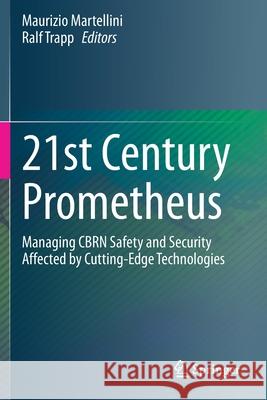21st Century Prometheus: Managing Cbrn Safety and Security Affected by Cutting-Edge Technologies » książka
topmenu
21st Century Prometheus: Managing Cbrn Safety and Security Affected by Cutting-Edge Technologies
ISBN-13: 9783030282875 / Angielski / Miękka / 2021 / 370 str.
21st Century Prometheus: Managing Cbrn Safety and Security Affected by Cutting-Edge Technologies
ISBN-13: 9783030282875 / Angielski / Miękka / 2021 / 370 str.
cena 481,91
(netto: 458,96 VAT: 5%)
Najniższa cena z 30 dni: 443,35
(netto: 458,96 VAT: 5%)
Najniższa cena z 30 dni: 443,35
Termin realizacji zamówienia:
ok. 22 dni roboczych
Dostawa w 2026 r.
ok. 22 dni roboczych
Dostawa w 2026 r.
Darmowa dostawa!
Kategorie:
Kategorie BISAC:
Wydawca:
Springer
Język:
Angielski
ISBN-13:
9783030282875
Rok wydania:
2021
Wydanie:
2020
Ilość stron:
370
Waga:
0.53 kg
Wymiary:
23.39 x 15.6 x 2.01
Oprawa:
Miękka
Wolumenów:
01
Dodatkowe informacje:
Wydanie ilustrowane











